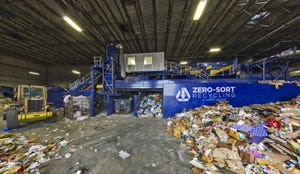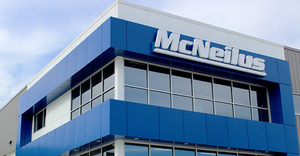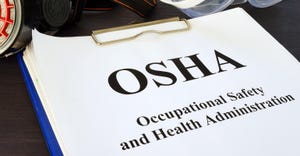Fleet on the Forefront
New York City's Department of Sanitation, a frequent early adopter of truck technologies, is now pilot testing hybrid vehicles.

A hybrid sanitation vehicle being pilot tested by the New York City Department of Sanitation.
When it comes to truck technology, it's hard to faze Spiro Kattan, supervisor of mechanics for the New York City Department of Sanitation (DSNY).
To Kattan, selective catalytic reduction (SCR) technology is old hat. While almost every new heavy refuse truck built from here on out is going to be equipped with the technology — except for Navistar models, which use advanced exhaust gas recirculation (EGR) to reduce emissions — DSNY pilot tested SCR almost a decade ago in partnership with Mack Trucks.
"We had two of the 15 SCR pilot trucks operating in the entire U.S. back in 2000," he says. "We operated them for two years, learning all the ins and outs of that particular technology. And wouldn't you know it — it came back as the predominant emission control technology for 2010. But we'd already known how to handle its requirements for some time. Pilot testing it made us better prepared."
In 2007, the introduction of diesel particulate filters (DPFs) to reduce emissions of particulate matter (PM) gave some refuse fleet managers heartburn. However, DSNY had been testing DPFs since 2001. "We'd even gone out and bought a DPF cleaning machine, knowing we'd need to use it at some point down the road to remove accumulated ash from the components," Kattan says.
How about when ultra low sulfur diesel (ULSD), with a sulfur content of 15 parts per million (ppm) hit the market back in October 2006? The federal government's mandate transitioning all on-road diesel fuel to ULSD might've been a headache for some fleets, but not DSNY, which had been using the fuel since 2001. "By the time 2006 came around, we'd already gotten ULSD in place. We had our [refueling] infrastructure ready for it," Kattan notes. "Testing ULSD so early really helped us when the entire industry transitioned to it."
Now, DSNY is engaging in, in Kattan's words, more "frontline testing" to study the ins and outs of various hybrid technologies being designed for heavy-duty trucks.
On the Road
About three years ago, DSNY determined that it wanted to get ahead of the curve with hybrid systems and started testing them in heavy refuse applications. The public agency is currently testing or waiting to test four hybrid truck models:
a Mack TerraPro low-entry, parallel hybrid diesel-electric truck designed specifically for Class 8 applications;
a Crane Carrier Corp. low-entry diesel-electric hybrid model that uses a Bosch Rexroth hydrostatic regenerative braking (HRB) parallel hydraulic system;
a Crane Carrier low-entry model equipped with an ISE Corp. hybrid-electric series drive system; and
a Kenworth T370 medium-duty hybrid deployed to see how it handles tasks such as hauling heavy materials.
The Mack and Crane Carrier trucks have a gross vehicle weight of at least at 72,000 pounds and are deployed in regular trash collection service. The goal of the pilot test is to determine which type of hybrid best fits DSNY's residential collection operations, which, given the size and scope of the city, incorporate a multitude of driving patterns and duty cycles.
DSNY, with the help of New York City's Department of Transportation, received federal Congestion Mitigation Air Quality funding to pay for some of the cost of the pilot test. The department laid the groundwork for this massive pilot test by working closely with the Pasadena, Calif.-based fleet consulting firm Calstart, which had launched its Hybrid Refuse Truck User's Group.
It took a few years for truck makers to develop the specs needed to get heavy-duty hybrid refuse trucks onto the road. "The issue is that you can only go so far with 'pen and paper' when it comes to new technology," Kattan says. "We wanted to get this technology out in the field so the OEMs could gather better data on how the hybrid trucks performed and could then deliver us a better production-ready product in the future."
Eventually, DSNY expects to have seven hybrid trucks in operation for its large-scale pilot test of this technology. Two are already in service. Three more are due to be delivered in the first quarter of this year, and the final two trucks will hit the streets before the year is out. DSNY officials are not certain how long the pilot test will last. When all is said and done, the test could last two years or longer.
In the end, however, Kattan says the pilot test will not just benefit DSNY. "It's not just about developing technology that we can use to be greener and more efficient," he says. "It's about helping commercialize technology that could potentially help our entire industry reduce fuel consumption, reduce emissions, and reduce costs of operations."
Historically, he says, DSNY has been willing to test any number of technologies — safety, emission, and operations related — because doing so helps the waste industry become more efficient, safer and more environmentally friendly. "In the end, we all get better equipment," Kattan says. "It's a win-win for everyone: the OEM, the fleets, and, most importantly, the general public."
Related Stories
Sean Kilcarr is the senior editor of Fleet Owner, a sister publication of Waste Age.
About the Author
You May Also Like


